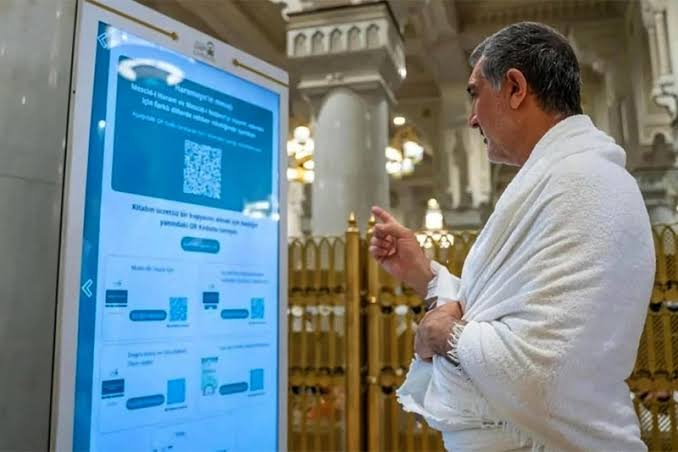As the sacred season of Hajj 1446 AH approaches, Saudi Arabia has introduced groundbreaking technological advancements to facilitate a smoother, safer, and more spiritually enriching pilgrimage for millions of Muslims from across the globe. From artificial intelligence (AI) robots to smart infrastructure, the Kingdom is blending faith with futuristic innovation, reported the Halal Times.
By May 26, over 1.07 million international pilgrims had already arrived in Saudi Arabia. India’s Hajj quota stands at 175,025 this year, managed by the Ministry of Minority Affairs. With pilgrims coming from varying linguistic and cultural backgrounds, the Saudi administration faces the monumental task of managing crowds, ensuring safety, and providing religious assistance amidst intense summer heat.
To meet these demands, authorities have deployed the AI-powered Manara Robot at the Grand Mosque in Makkah. This multilingual robot, available in 11 languages including Arabic, English, Urdu, Bengali, and Malay, offers real-time religious guidance and automated answers to frequently asked Islamic jurisprudence queries. For complex matters, it connects pilgrims via video call to certified scholars, ensuring accuracy in religious advice.
Aesthetically modeled to reflect the architectural beauty of the Two Holy Mosques, the Manara Robot comes with a 21-inch touchscreen, high-resolution cameras, and 5G connectivity, seamlessly merging traditional design with state-of-the-art technology.
This initiative is a part of Saudi Arabia’s wider Vision 2030 strategy, aiming to integrate AI and robotics across sectors. Earlier this year, the Kingdom launched “Sara,” its first humanoid robot capable of bilingual communication, symbolizing Saudi cultural values.
Apart from the Manara Robot, authorities have introduced multiple smart technologies to ease pilgrim movement. Advanced gate sensors, AI-powered surveillance systems, and real-time crowd flow monitoring are now operational, enabling authorities to manage large crowds effectively and preempt bottlenecks.
Significant infrastructural improvements complement these digital enhancements. In Arafat, over 84,000 square meters of road have been repaved with recycled, sun-reflecting materials, lowering ground temperatures by around 12°C. A 4,000-meter cooled and shock-absorbing pedestrian path to Mount Arafat enhances accessibility, particularly for elderly and differently-abled pilgrims.
In addition, over 16,000 square meters of rubberized asphalt have been laid, especially between Namira Mosque and the Arafat Train Station, reducing the impact on pilgrims’ feet. A lush 1,200-meter green corridor, equipped with mist-cooling systems and water fountains, developed in collaboration with the Abdulrahman Fakieh Charitable Foundation, offers respite and serenity.
These tech-driven developments reflect Saudi Arabia’s commitment to preserving the sanctity of Hajj while elevating safety, comfort, and access. The Kingdom’s efforts serve as a global example for managing large religious gatherings. India, with sites like Vaishno Devi and Tirupati Balaji, and even Vatican City, could benefit from similar innovations.
The Manara Robot is more than a technical marvel—it represents a visionary shift in how faith and technology can coexist. It upholds tradition while embracing modernity, symbolizing a future where spirituality is enhanced, not hindered, by digital tools.
As Hajj 1446 ushers in a new era, the faithful witness a remarkable blend of devotion, dignity, and digital empowerment—setting a precedent for spiritual gatherings worldwide.




